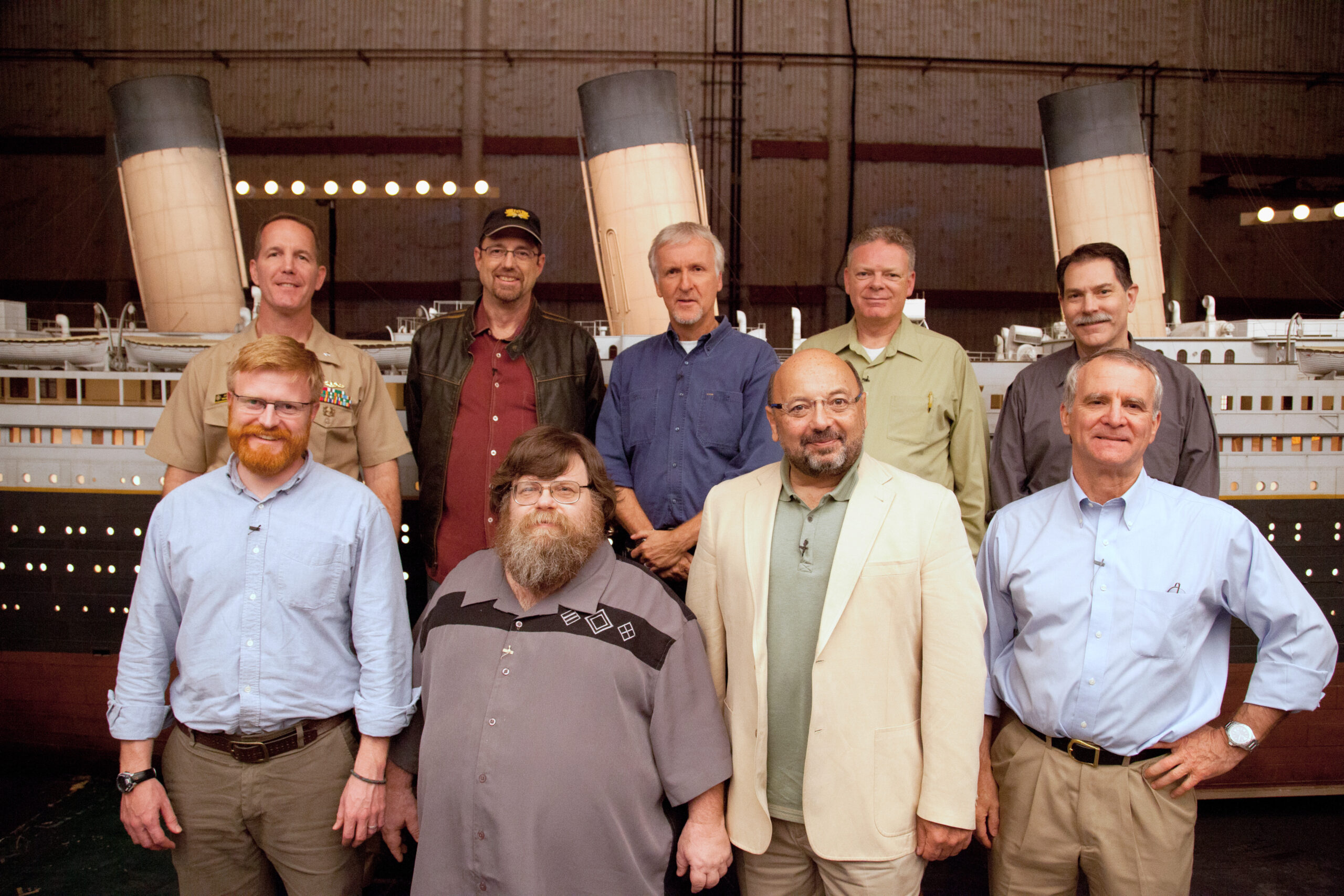My first contact with PH was around 1990, if I recall, a conversation over the phone. After seeing Titanic’s crow’s nest in seemingly perfect condition when first discovered in 1985 (although pulled askew by rigging when the foremast fell backward during the plunge to the sea floor), the Titanic community was horrified a couple of years later to see this iconic feature of history’s most legendary shipwreck in tatters, crumbling off the mast. Surely, we assumed, the 1987 “salvage expedition” using the submersible Nautile had carelessly bumped into it, causing this collapse. They must have been trying to pull out the crow’s nest telephone, we thought. After Robert Ballard insisted that his explorations in ’85 and ’86 never touched the crow’s nest, what else could explain this sudden damage?
George Tulloch arranged a conference call with PH and me to clear the air. It was my first conversation with either of them. PH calmly explained, in detail, how surprised he was, himself, to discover the nest hanging in shreds from the mast. He described how thin steel was corroding through and weakening in many areas of the wreck, and, he said, the crow’s nest was simply falling apart on its own accord, fragments landing on the well deck below. He assured me that Nautile never bumped the nest.
His in-depth explanation was convincing. And in the decades since, studying many hundreds of hours of wreck video and still imagery and exploring Titanic on six occasions myself, I know that what he told me is true. I’ve seen thin fragments of steel standing upright one year, fallen to the deck later and then ultimately literally vanished, corroded away to nothing. This is what happened to the lightweight crow’s nest.
Following this enlightening conversation with PH I tried to reverse this destructive rumor and set the record straight when and where I could. Talking with him was influential in changing my opinion about artifact recovery. I’d been quietly in favor of it, but speaking with him and George made me more certain that it was the right and noble thing to do, indeed a necessary way to keep the memory of Titanic and her people alive into the future.
I didn’t actually meet PH until October of 2011 when Jim Cameron assembled a group of authorities and explorers to analyze the sinking and wreckage for the National Geographic production “Titanic: The Final Word.” Over two long days of shooting we all discussed and argued over numerous aspects of the disaster and the ship’s plunge to the bottom, resulting in some fascinating opinions, revelations and conclusions. It was wonderful to share that time with PH and the others, and I’m glad that a small part of that experience survives in the final edit of the program.
It was Jim who, with all his connections in the submersible world, first notified me about Titan the morning after contact was lost. With his vast diving experience, he was almost certain the game was over.
PH was the only person aboard Titan whom I knew. His loss to the field of Titanic wreck study and underwater exploration is a tremendous, painful one. It cuts really deep. We’ll miss you, PH, and thank you for all you did.

